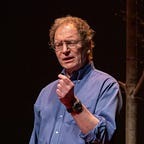Sometimes Evolution Is Too Slow to Protect Us
While evolution has brilliantly allowed our bodies to adapt to threats and opportunities over time spans of thousands of years, we are faring less well in response to more recent threats. Indeed, threats can appear in our built environment so suddenly that evolution simply can’t keep up.
Sugar!
The production of sugar on an industrial scale is one such example. People had chewed raw sugarcane for millennia, but around 350 AD Indians of the Gupta dynasty discovered that sugar could be extracted and crystalized. By the 1700’s sugar had been introduced into Great Britain, but was at first prohibitively expensive. Once sugarcane was introduced into the Caribbean Islands cheap slave labor caused the price of sugar to plummet, and consumption skyrocketed: average per capita yearly consumption in Britain rose from four pounds in 1700 to eighteen pounds in 1800, thirty-six pounds by 1850 and almost one hundred pounds(!) by the twentieth century; that’s almost one third of a person’s daily caloric needs(!!).
Sugar in tea, sugar in coffee, sugar in jam, sugar was everywhere. So intense was the desire for sugar that it has been called a “drug food”. The health consequences of this sudden dietary change were predictable and horrific: teeth rotted, obesity and diabetes surged. Defenseless in the face of an addictive, destructive food, humans took almost a century to tame their sugar addiction through education. This solution was delayed for decades by a concerted disinformation campaign from the sugar lobby, a tactic that cost hundreds of thousands of lives. The story of the sugar industry’s skulduggery is well told in The Case Against Sugar by Gary Taubes.
Tobacco!
Tobacco is a second example of an environmental threat to human health on a timescale that doesn’t allow for evolution’s intervention. The risk posed by smoking was modest until the introduction of cheap, convenient, plentiful, pre-rolled cigarettes in the early 20th century made cigarettes the greatest threat to human health since the black death. As with sugar, decades of research and education were required to reduce the harm done by cigarettes. Dishearteningly, again a disinformation effort, this time sponsored by big tobacco, added millions of needless deaths to the toll taken by smoking. The proportion of Americans smoking has fallen dramatically since its high of almost 50% in the 1960’s, a testimony to the success of a prolonged public health awareness campaign:
Sitting still
Environmental threats to our species continue to emerge. The latest such challenge is posed by our furniture, specifically our chairs. The sudden adoption of static sitting as our default position for most of our waking hours has caught us unawares. For three million years we were hunter gatherers, and thus, uniquely among our primate cousins, we evolved to require daily exercise to remain in good health.
Unfortunately, the last century has seen us become a largely seated species, slumped in front of computer monitors or televisions when not sitting at the dinner table or sitting in our cars. Fortunately, an education campaign has begun (“sitting is the new smoking”), and the hunt for alternatives to our destructive office chairs is on. A perfusion of possible solutions has emerged: yoga balls, standing desks, treadmill desks, and most recently active chairs that allow, even require, movement while sitting. The jury is still out as to the best antidote to passive sitting; likely different solutions will appeal to different people. But active chairs have some advantages: they can seamlessly replace standard office chairs at a moderate cost and thus unobtrusively introduce more movement into one’s day. The idea of making sitting active, rather than passive, is attractive because we spend so much time sitting. If sitting could be made healthful it would be an immense public health success. Active chairs are available from several companies: CoreChair in Canada, Mishu and Swopper in Germany, and QOR360 in the United States.
Encouragingly, no concerted disinformation campaign touting fictional “benefits” of prolonged passive sitting has been mounted by the furniture industry. However, some solutions to the sitting have been promoted without mentioning serious drawbacks. For example, although standing desks have been intensively promoted and widely adopted, there is little evidence that they actually mitigate any of the problems caused by passive sitting. As the New York Times pointedly observed of standing desks in 2018: “… They’re not cures for anything, and standing is not exercise”.
Much more worrisome, a recent paper in the American Journal of Epidemiology found that standing desks actually doubled the risk of heart disease compared to passive sitting.
https://academic.oup.com/aje/article/187/1/27/4081581
Seemingly, at least in the case of standing desks, truth is the first casualty in the world of advertising.
Almost a century ago Winston Churchill observed that “We shape our building; thereafter they shape us”. Although Churchill was commenting on the effect of our architecture on our social interactions, he might just as well be commenting on how our built environment shapes our anatomy and our physiology. Our intuition that our built environment may have unintended consequences for our health is one that serves us well. And, while many of modern innovations make us healthier and safer (antibiotics, airbags, carbon monoxide monitors, etc.), some of our technologies have made us less healthy.
Our office chairs are threats to our well being, hiding in plain sight, but over time we’ve come to plainly see the mischief they are causing. And the solution is simple: sit less, or, if you must sit, get up often and go for a walk. Even a short walk, a so called “exercise snack” can make a significant difference in one’s blood chemistry markers of health. And finally, if you can’t avoid sitting, you might think of sitting differently.
